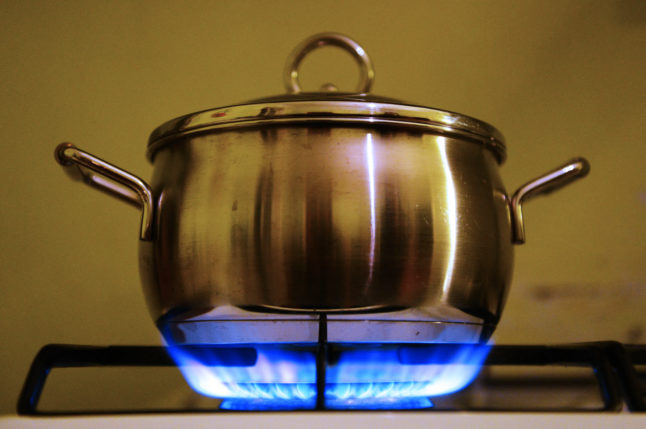People in Italy are receiving bills this week for energy use in recent months – and they’re even higher than many people expected, leading to concerns about further increases over the coming winter.
Gas and electricity prices in Italy have soared in recent months, as Europe continues to be buffeted by a volatile energy market in the wake of Russia’s invasion of Ukraine.
Italy is particularly dependent on Russian gas, importing 95 percent of the gas it consumes, of which around 40 percent comes from Russia.
As a result, bills are rising at an alarming rate – and so far a series of government measures aimed at offsetting the costs have provided only a very thin cushion.
Families are currently paying approximately 70-80 percent more for gas than they did a year ago, according to an August report for the trade publication Qualenergia.it – raising the roughly €1,700-1,800 the average household would spend in a normal year to around €2,900-€3,240 this year.
But with Europe’s energy crisis showing no signs of abating, prices seem set to rise even higher than this.
Residents across Italy have reported seeing their gas and electricity bills for the second quarter of 2022 double or even triple compared to the same period last year.
READ ALSO
- How long will it take Italy to wean itself off Russian gas?
- EXPLAINED: What is Italy doing to cut the rising cost of living
- Why one southern Italian region is giving residents free gas
“Ours is usually €90 for our apartment, there’s 3 of us… July was €170,” says Italy resident Kav Kavanagh.
Another foreign resident who didn’t want to be named told The Local his own household energy bills have gone from €190 to €560 for two months of use – and that those for his workplace have risen tenfold, so that his employers have had to request rateizzazione (payment in instalments).
“So far we’re keeping our neck above water, so to speak, and had to up our prices by 30 percent, and unfortunately diminish our staff, therefore our service quality has gone down and unfortunately customers aren’t as understanding as of yet,” he said.
Prices are predicted to double again from October, says Qualenergia.it, as the cost of gas on the Amsterdam stock exchange rose from €84/Mwh at the start of July to more than €109/Mwh at the start of August.
Gas prices overall have risen more than tenfold in the last year, from around €27/Mwh in August 2021 to an eye-watering – and record-breaking – spike of €341/Mwh at the end of August 2022.
These increases mean Italian businesses are forecast to pay at least €106 billion more in 2022 than in previous years, according to a recent estimate from the Italian small and medium sized business federation CGIA.
The hikes have led to demonstrations from desperate business owners and local efforts from small companies and public administrations to cut costs by closing offices and reducing opening hours.

Earlier this week, members of the Confcommercio business association in Perugia staged a protest against the soaring costs by burning their energy bills in a city centre piazza.
In June, the town council for Fluminimaggiore in southern Sardinia trialled shutting off its energy supply over the Republic Day bank holiday weekend – while remaining open for essential services – to save on costs.
Some consumers on fixed-rate energy contracts have so far been shielded from the increases, but that could soon be set to change.
One resident on such a contract reported receiving a letter from their energy company in June “proposing a contractual amendment” that would see their bill tied to national stock exchange gas prices from the start of December, and inviting them to sign a new contract if they didn’t want to accept the change.
READ ALSO
- Italy to bring in new aid measures as energy prices soar
- Italy tells residents to turn down the heat to combat energy crisis
- EXPLAINED: Who can claim a discount on energy bills in Italy?
Italy on Tuesday announced new energy-saving rules designed to cut costs, including restricting thermostats in business premises to a maximum temperature of 19C over the winter and reducing the time the heating can be on by one hour a day and 15 days across the year.
The government has signed off on a series of aid packages over the course of the year aimed at buffering some of the shock, and new aid bill is currently under discussion.
For Italian residents and businesses, help can’t come soon enough.
“The combination of expensive energy and the increase in the cost of raw materials has brought about the perfect storm that we feared,” the Lazio general secretary for CISL, the Italian Confederation of Workers’ Trade Unions, told the local news outlet Ciociaria Editoriale Oggi last week.
“Urgent and substantial interventions are needed, to save income and wages, businesses and jobs.”



 Please whitelist us to continue reading.
Please whitelist us to continue reading.
Does anyone know whether the price per Kwh that ENEL pays to those who generate solar power will increase in line with the hike in energy costs?